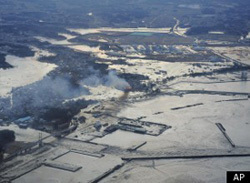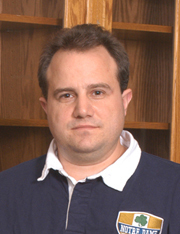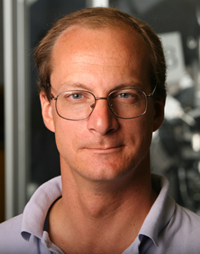
The continuing nuclear energy crisis at Japan’s earthquake and tsunami damaged Fukushima Daiichi nuclear site has once again raised questions in the United States about how to manage and safely store highly radioactive spent nuclear fuel. The questions have long been the focus of researchers Thomas Albrecht-Schmitt and Peter Burns of the University of Notre Dame’s Department of Civil Engineering and Geological Sciences.
Albrecht-Schmitt is a renowned expert in the materials and solid-state chemistry of heavy elements, especially uranium, neptunium and plutonium. He has created several new materials with these elements that offer unique properties necessary for the advancement of clean, and green, energy.

This is important because research in heavy elements yields fundamental insights that can be used to develop new technologies and processes for the safe handling and disposition of radioactive materials. Studies of these elements and their by-products help address the environmental consequences of weapons programs, as well as the release of nuclear materials into the environment from nuclear energy production.
For example, novel materials that can work in extremely high radiation fields could lead to the development of advanced waste forms for safely storing the unwanted by-products of nuclear power. Likewise, the same material could offer properties that would deter these same by-products from leaching into the environment.

Burns is director of a multi-million dollar Energy Frontier Research Center (EFRC) at Notre Dame, funded by the U.S. Department of Energy and established to purse advanced scientific research on energy.
Notre Dame’s EFRC is titled “Materials Science of Actinides.” The focus of this center, which includes participants from several other universities and national laboratories, is the elements that are the basis of nuclear energy (uranium, plutonium and other actinides). Research in the center seeks to understand and control materials that contain actinides at the nanoscale, which is about one-millionth of the size of the tip of a ball-point pen. This research is intended to lay the scientific foundation for advanced nuclear energy systems that may provide much more energy while creating less nuclear waste.
Although both Albrecht-Schmitt and Burns expect rising anti-nuclear power sentiment in the wake of the Fukushima Daiichi disaster, they caution that the crisis should not result in a decision to exclude nuclear power from the future energy mix.
Albrecht-Schmitt points out that the severity of the earthquake and tsunami that Japan experienced were unprecedented.
“This particular disaster does not speak to the overall safety of nuclear energy,” he said. “I’ve had the opportunity to tour a number of nuclear plants and one cannot help but be impressed by the level of safety measures these plants have in place.”
Burns notes that although we have accepted a certain level of risk for some energy technologies, nuclear energy has yet to receive a similar comfort level.
“Not a single person was killed due to nuclear energy production last year, yet there were numerous deaths from coal mining accidents,” he said. “Yet hundreds of new coal plants have been built over the last 30 years, but America has not built a nuclear one in more than 30 years.”
Burns notes that an important aspect of the nuclear accident in Japan that has received little media attention to date is the longer-term implications of the accident.
“Once the immediate hazards have passed in Japan, the Fukushima Daiichi site must be rendered safe for future generations,” he said. “This is a considerable challenge as there are at least 1,600 metric tons of used nuclear fuel on site, as well as reactor components that are radioactive. Spent fuel assemblies contain large quantities of actinides that will remain hazardous for millennia. Research concerning actinide materials ongoing in the Frontier Energy Research Center is providing important insights concerning the long-term environmental fate of the affected site.”
The research Albrecht-Schmitt and Burns are pursuing may will help turn the nuclear energy questions from “Is nuclear power safe?” to “How can radioactive waste be recycled into useful fuel, so that storage is less of an issue?’
Contacts: Thomas Albrecht-Schmitt, 574-631-1872, talbrec.1@nd.edu; Peter Burns, 574-631-7582,pburns@nd.edu